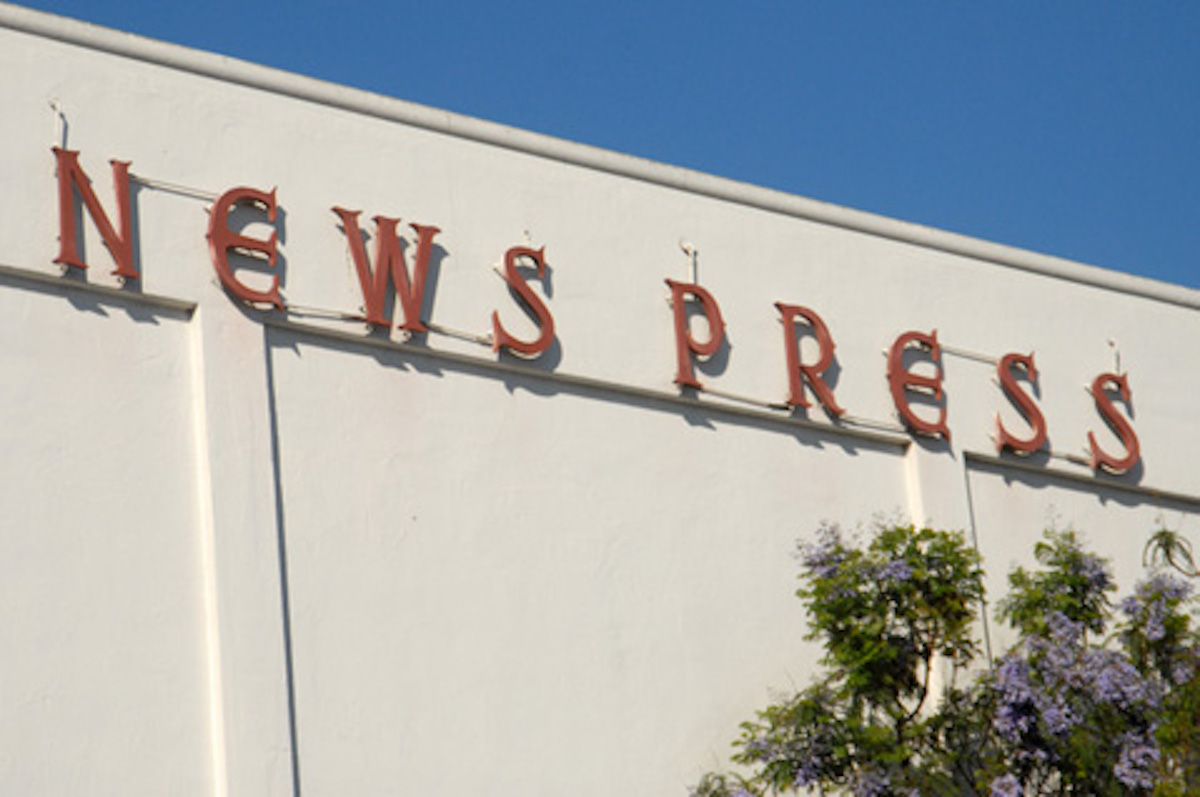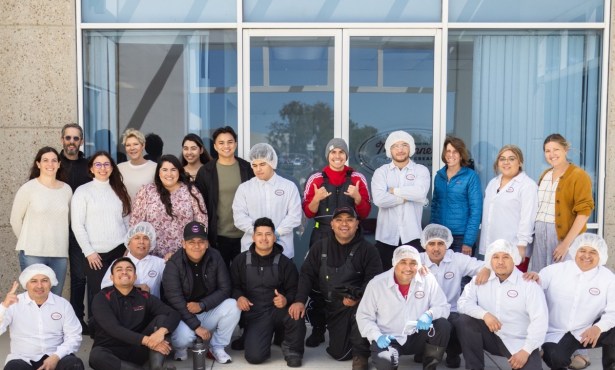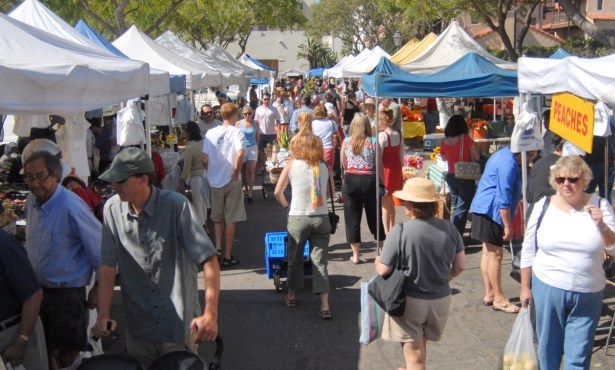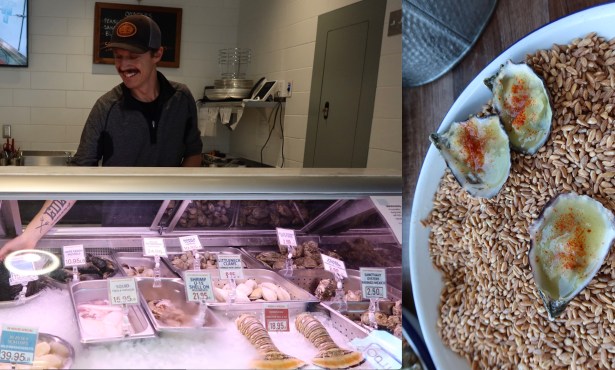The Last Days of ‘Santa Barbara News-Press’
How Santa Barbara’s Oldest Newspaper Went from Winning a Pulitzer Prize to Declaring Bankruptcy

On Friday, July 21, the Santa Barbara News-Press — or what was left of it — officially declared Chapter 7 bankruptcy, ending more than 150 years of history and firing all remaining employees in one final death knell. According to the court filing, the newspaper’s holding company, Ampersand Publishing, LLC, held a special meeting around May 1 to authorize the bankruptcy and draft a resolution signed by owner and publisher Wendy McCaw.
Employees were notified via an email sent to News-Press staff on Saturday evening, in which Managing Editor Dave Mason wrote: “I have some bad news. Wendy filed for bankruptcy on Friday. All of our jobs are eliminated, and the News-Press has stopped publishing. They ran out of money to pay us. They will issue final paychecks when the bankruptcy is approved in court.”
While some current and former staff were blindsided by the last-minute announcement, others saw the writing on the wall for years, claiming that the city’s once hard-hitting paper, which won a Pulitzer Prize in 1962, had been in a decline ever since McCaw — a onetime billionaire who acquired a large portion of her wealth through a divorce settlement with wireless pioneer Craig McCaw — purchased the paper for an estimated $110 million in 2000.

“It’s simply the inevitable period at the end of an artless, run-on sentence,” said Starshine Roshell. A contributing writer and former columnist at the Santa Barbara Independent, Roshell worked for the News-Press as a news reporter, columnist, and deputy features editor in the early 2000s before leaving along with dozens of staff members during the mass exodus in 2006 due to McCaw’s “breaches of journalistic ethics.”
“Before she got there and began to destroy it, it was the best place I ever worked, and I’m forever grateful for what I learned and created there,” Roshell told the Independent shortly after hearing of the bankruptcy filing.
Long before McCaw took over, the News-Press got its start in 1868 as the Santa Barbara Post — just three years after the San Francisco Chronicle (1865) was founded and more than 15 years before the Los Angeles Times (1881). The newspaper eventually became the Morning Press, and in 1932 the paper was acquired by Thomas More Storke, who merged the paper with his previous publication, the Santa Barbara News, to create the Santa Barbara News-Press. Under Storke, whose father ran the editorial page and whose son oversaw the daily operations, the News-Press gained national prominence, with Storke earning the Pulitzer Prize for Editorial Writing in 1962 for a series bringing light to a semi-secret far-right-wing organization known as the John Birch Society.
Two years later in 1964, Storke sold the News-Press to the former owner of the Philadelphia Bulletin, Robert McLean, whose nephew Stuart Taylor took over and ushered in a new era of news writers, including Dick Smith and Walker Tompkins.
After 20 years, in 1984, the paper was sold again, this time to the New York Times. It operated under the Times ownership for more than 15 years, growing in popularity until 2000, when McCaw purchased the paper.
Within the first few years of McCaw’s reign, the News-Press staff began to butt heads with the new publisher. McCaw took a hands-on approach, directly overseeing the paper’s content in a way that many of her employees felt compromised the News-Press‘s journalistic neutrality and credibility. In July 2006, these conflicts bubbled over when five newsroom employees resigned at once, including editor Jerry Roberts, managing editor George Foulsham, and metro editor Jane Hulse.
The mass resignation was the result of several years’ worth of conflict, accelerated by two specific incidents in which McCaw allegedly attempted to censor the publication of a story involving an employee who was convicted of drunk driving and another in which she reprimanded a reporter for publishing the address of a Montecito development project that belonged to actor Rob Lowe.
(Lowe, at the time, testified during a planning commission meeting regarding that same project. Although the address and Lowe’s comments were a matter of public record, and no policy existed at the paper preventing the information from being published, McCaw — who admitted during a National Labor Relations Board hearing that she and Lowe were personal friends — allegedly took umbrage to the fact his identity and address were divulged.)
In the next few months, at least 60 staff — including all but two news reporters — resigned or were fired from the paper. These included prominent journalists and columnists such as Roshell, who resigned when her column was canceled in 2006, and six reporters who were fired for participating in a protest in early 2007. The paper’s readers canceled their subscriptions in protest and in solidarity with the staff.
Since 2007, the paper has been tied up in numerous lawsuits and legal actions, including an effort by remaining News-Press employees to unionize as part of the International Brotherhood of Teamsters.
Sign up for Indy Today to receive fresh news from Independent.com, in your inbox, every morning.
Over the past decade, under McCaw’s leadership, the paper took a hard right turn toward conservative coverage. During the 2016 election, the News-Press held the distinction of being the first in the country to endorse Donald Trump, a dark-horse candidate at the outset of the political year. In 2020, the paper doubled down to endorse Trump once again.
The financial troubles resulting from a lack of subscriptions and dwindling advertising accelerated this past year. In October 2022, the paper announced it was ending its daily home delivery. In April 2023 — just a few weeks before the company officially decided to declare bankruptcy — the staff moved out of the historic News-Press building in De la Guerra Plaza to move all of its operations to its Goleta printing plant. Then in June, after McCaw had already signed the resolution to declare bankruptcy, the paper discontinued all of its printing jobs, including the print services supplied to several other regional publications such as UC Santa Barbara’s student-run newspaper the Daily Nexus.
Staff continued to work and produce daily digital content throughout June and July, with the website displaying a banner stating: “The News-Press is entirely digital. View our daily edition under ‘Virtual Editions.’”
The final virtual edition and website content were released Friday, July 21, and the website makes no mention of the bankruptcy filing as of press time. According to staffers working on the final day of publication, the email message announcing the bankruptcy and the elimination of all remaining jobs was delivered at the end of the next day, July 22, at 6:08 p.m.
The court documents, which were filed in California’s Central District Court, claim Chapter 7 bankruptcy, specifically for liquidation, not reorganization. Ampersand Publishing claims to have no property available to pay creditors, estimating that “after any administrative expenses are paid, no funds will be available to unsecured creditors.”
Under federal law, employees of a company filing Chapter 7 bankruptcy are legally entitled to claim up to $15,150 in wages, salaries, commission, vacation, severance, and sick leave earned within six months of the filing date, which would allow the eliminated employees to claim any unpaid time, although they will not receive payment until after the bankruptcy is cleared through the courts. The filing makes no mention of the estimated $3 million in back pay, fines, and interest that has accumulated since 2007 from National Labor Review Board judgments.
The 111-page court document offers a complete list of the company’s 818 debtors, which include the paper’s active subscribers who have paid through the year, several law firms, and the cities of Goleta and Santa Barbara; McCaw is also listed as an individual debtor.
According to the filing, Ampersand Publishing indicates it has less than $50,000 of assets remaining, and liabilities anywhere between $1 million and $10 million.
The company’s two long-standing properties, the historic building at 715 Anacapa and the printing facility at 725 Kellogg, are not considered assets in the court ruling. In 2014, both properties were switched to separate investment companies — 725 Kellogg, LLC; and 715 Anacapa, LLC, both of which list McCaw as director and CEO. According to the county assessor’s office, the downtown building’s assessed value is $15.2 million, and the Goleta printing plant is assessed at $11.5 million.
It is uncertain what will happen to the newspaper’s massive historical archive in light of the bankruptcy filing. The fate of the paper’s clippings and any bound back issues is on the mind of more than one Santa Barbara historian. Some who had researched local history among the archives at the De la Guerra building got the boot a long time ago, with one describing the archive’s recent atmosphere as a “hermit nation.” Two locations that hold many documents that reflect the area’s history — UC Santa Barbara’s Special Collections and the Santa Barbara Historical Museum — have not received any inquiries about receiving the newspaper’s archives.




You must be logged in to post a comment.